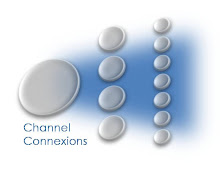The Big Incentive: Often there is a “big” reward for a channel partner achieving a certain goal. Some examples:
Growth: Many companies choose to offer a Growth Incentive for partners achieving an annual revenue target. The most common is the growth rebate where a vendor offers a percentage rebate for a channel partner reaching a specific revenue target. Let’s say a vendor challenges a partner to grow revenue 20% year-over-year. In exchange for the growth, the vendor offers a 10% rebate on that growth. The resulting 2% goes straight to the channel bottom line. In some cases, this can be quite substantial. Please note that some industries (ie. Insurance) frown on these types of contingent payouts, while other industries are more accepting.
Recognition Trip: Companies may choose an exciting location for an annual celebration with top partners. While considered by some to be a “boondoggle”, these events can be quite productive. While it is nice to get away and enjoy a nice destination, I recommend that you take this time, with your captive audience, to engage in a learning opportunity. It is a perfect opportunity for executive teams to discuss the status of the market, new business opportunities, and potential issues to address.
The Sales Incentive: The Big Incentives are nice, but they are typically only beneficial to the most senior levels of the organization. For example, few channels will distribute the gains from a growth incentive to their sales teams, preferring to take profit instead. As such, it is important to recognize the outstanding individual efforts of your extended sales force. There are countless ways to accomplish this with gift cards, redeemable points, and cash. Remember, these are the folks that make it happen for your every day.
Public Recognition: I mentioned in my previous post about the Hierarchy of Motivations, that channel partners have a social need that you need to address. Recognizing extraordinary accomplishments in service excellence, innovation, and program execution in a public forum is a great way to celebrate your channel partnerships. A small token (like a plaque) coupled with a press release satisfies the social need and demonstrates your commitment to the partnership, for example.
The Little Things: These are really the biggest things because they matter most. A well written and sincere Thank You note is almost a thing of the past, and yet is perhaps the best way to recognize your partner. Everybody likes to be recognized for the long hours, hard work, and commitment we put into a project or relationship. It is shameful to not share your appreciation. You can also send a quick email to “the boss” letting him/her know how much you appreciate the efforts of an individual or team. Don't forget the little things.
These are just a few ideas and frankly, the more creative you can get with your "Celebration Programs" the better.






 Very different than the traditional pyramid structure used in managing relationships with the end user. The basic concept is that how you sell and market to a Fader should be very different than how you sell and market to an Up & Comer...regardless of their external designation.
Very different than the traditional pyramid structure used in managing relationships with the end user. The basic concept is that how you sell and market to a Fader should be very different than how you sell and market to an Up & Comer...regardless of their external designation.



 Demographic data is passive, and therefore a poor predictor of future behavior. Just because you are a white male living in Illinois, doesn't provide any indication that you will buy a new router, does it? Your goal should be to use "active" data like historical transaction records that will provide a much more accurate predictive model and enable you to target and customize your marketing campaigns.
Demographic data is passive, and therefore a poor predictor of future behavior. Just because you are a white male living in Illinois, doesn't provide any indication that you will buy a new router, does it? Your goal should be to use "active" data like historical transaction records that will provide a much more accurate predictive model and enable you to target and customize your marketing campaigns. 


